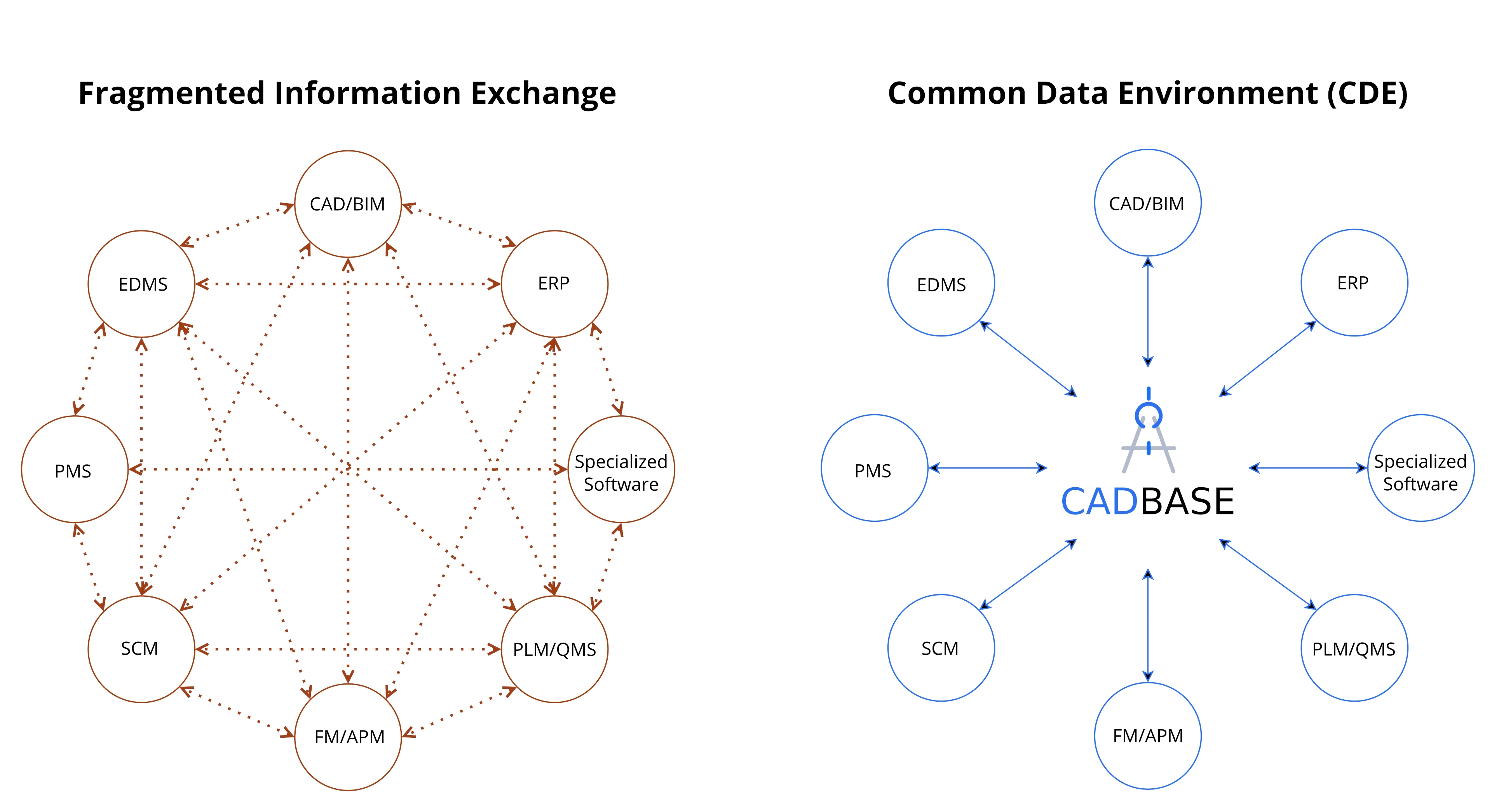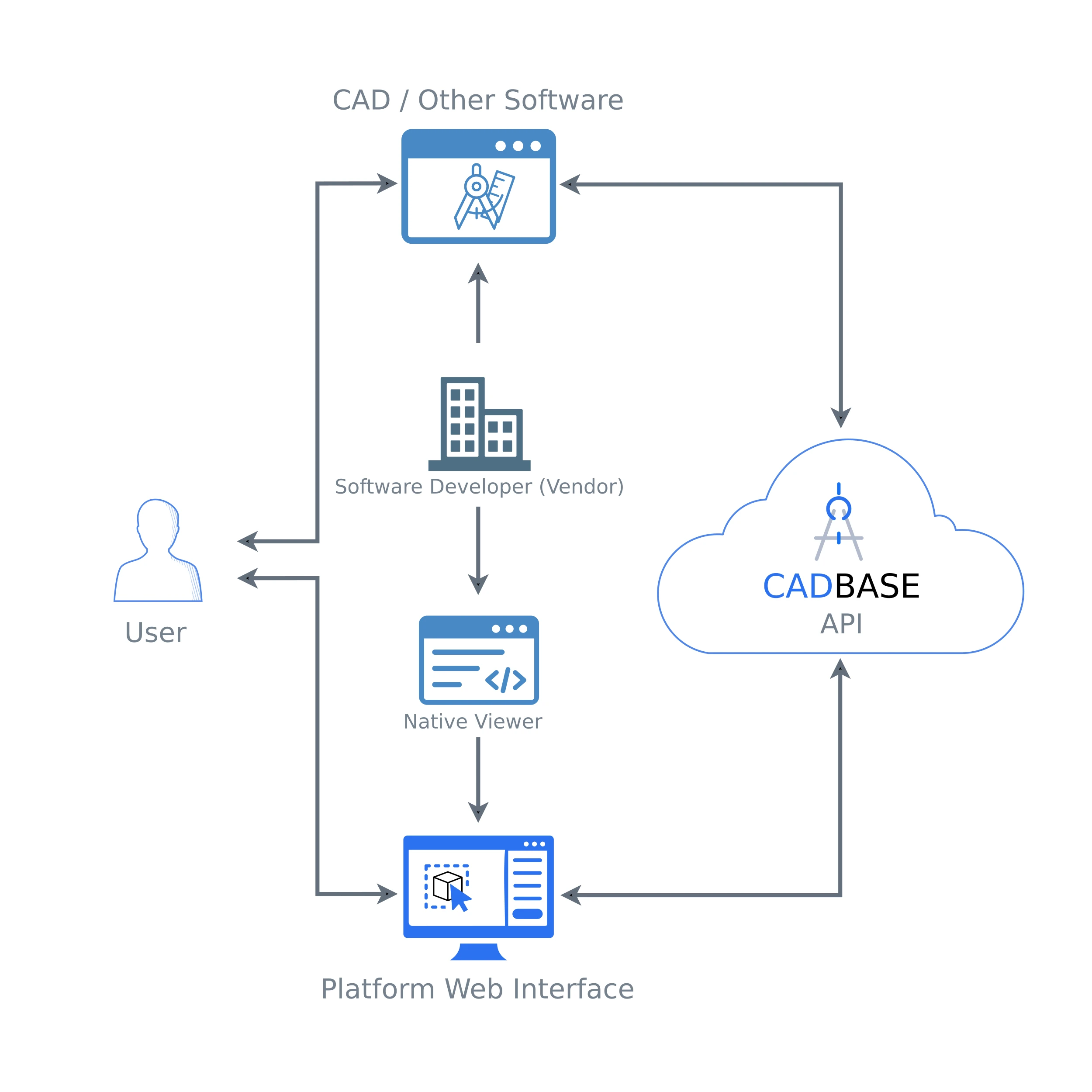
Table of Contents
Technological Fragmentation
The Problem
You receive a DWG drawing from a client using another vendor's products—and your viewer shows misaligned layers, shifted dimensions, unreadable text. Time meant for design is spent on corrections.
Major vendors develop ecosystems with deep integration within their own product lines. However, interaction between these ecosystems remains a complex technical challenge, impacting project timelines and quality.
Vendor Strategies
- Autodesk Forge — A cloud platform for application development within the Autodesk ecosystem.
- Dassault 3DEXPERIENCE — A unified platform for product lifecycle management.
- Siemens Teamcenter — A solution for managing engineering data and processes.
The specialization of platforms on working within their own ecosystems creates vendor lock-in. Data transfer between systems from different vendors requires significant investment in adaptation and migration.
Business Impact
Economic Impact
Engineers are forced to allocate time buffers to overcome technical incompatibilities, leading to increased project costs.
Time Losses
Time is spent not on design, but on coordinating files between contractors working in different ecosystems.
Risks
Errors during conversion and data loss at system boundaries are among the causes of clashes and defects in final products.
Open Standards
Modern standards, including ISO 19650 and BS 1192, establish principles for open data exchange and end-to-end compatibility. Strategies leading to the creation of "walled gardens" complicate adherence to these principles.
The "Nanosoft" BIM standard indicates that using heterogeneous software from different vendors leads to failures in data exchange, work duplication, and increased costs.
Thus, the key task becomes not creating another closed ecosystem, but building a neutral platform capable of unifying existing solutions in accordance with the spirit of open standards.
Neutral Platform
Adhering to the principles of open standards, CADBase implements the model of a neutral integration platform. Unlike vendor-specific solutions, the platform provides equal access for all market participants through standardized interaction interfaces.
Architecture Principle
The CADBase platform acts as a Common Data Environment (CDE), while participating systems provide native visualization of their formats through integrated viewers.
Single Source of Truth
Access to component catalogs with versioning and structural relationship support.
Native Visualization
Vendors integrate viewers for native display. This eliminates unnecessary conversion and data loss.
Optimized Interface
The GraphQL interface provides a strictly typed contract between systems. Clients form queries of the required structure, receiving data in a predictable format.
Vendor Independence
An open license eliminates dependency on a single solution provider.

CADBase Platform Integration Diagram
Benefits of the Neutral Approach
- No vendor lock-in or dependency on a single supplier.
- Cost reduction through a single API instead of pairwise integrations.
- Ability for gradual migration without being tied to a specific ecosystem.
- Modular system connection via standardized interfaces.
Practical Implementation
CADBase integration scenarios transform fragmented data into a strategic asset, reducing system integration costs, simplifying data exchange, and improving the quality of project documentation.
Key Scenarios
For Equipment Manufacturers
Integration with enterprise systems enables the distribution of catalogs and OEM models with automatic data updates.
For Engineering Companies
Unified access to components from all manufacturers reduces model search and verification time.
For CAD Vendors
Participation in the development of an open platform under an MIT license provides CAD vendors access to a common data environment without the costs of multiple integrations and legal restrictions.
Become Part of an Open Common Data Environment
Develop your products and expand CDE functionality for the whole community.
Use ready-made integrations CADBase Library (FreeCAD, Blender) and GraphQL API to save resources when connecting CAD and corporate solutions.
By integrating your software with CADBase, you offer clients a ready-made solution for cross-platform work with components, which becomes a competitive advantage when choosing your product.